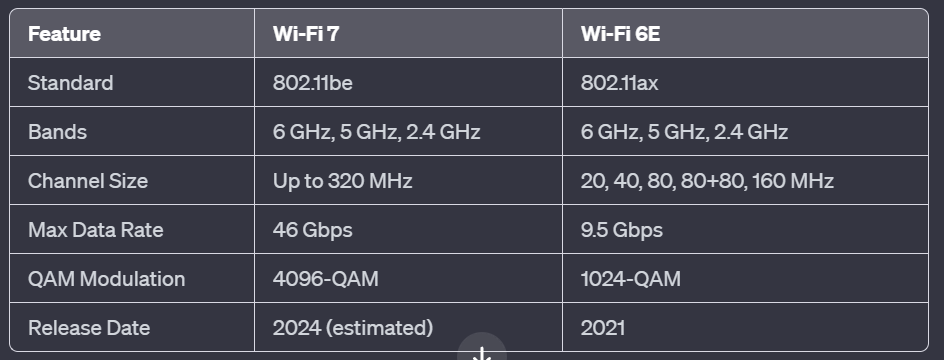Wi-Fi 7, also known as IEEE 802.11be or Extremely High Throughput (EHT), is the developing standard for the next generation of Wi-Fi technology, aiming to provide faster and more efficient wireless connectivity.
Wi-Fi 7 doubles the bandwidth by increasing channel width from 160 MHz to 320 MHz. Wider channels mean higher data transfer speeds and increased simultaneous data transmission capability.
MLO allows devices to aggregate two or more channels from different frequency bands (6/5/2.4 GHz), enabling simultaneous transmission and reception across frequency bands, particularly useful in scenarios requiring low latency and greater bandwidth, such as video conferencing and augmented reality gaming.
Wi-Fi 7 offers enhanced 4096-QAM modulation, achieving higher speeds through more efficient data encoding techniques.
Multi-User, Multiple-Input, Multiple-Output (MU-MIMO) enables Wi-Fi routers to communicate simultaneously with multiple devices, improving wireless connection efficiency. Compared to Wi-Fi 6, Wi-Fi 7 increases the number of spatial streams from 8 to 16, effectively doubling the physical transmission rates.
AFC is a spectrum utilization coordination system used by Wi-Fi 7 when operating in the 6 GHz frequency band. It aims to reduce interference with other services, ensuring normal wireless service.

Wi-Fi 7 is still in the development phase, expected to be formally standardized by 2024, but market adoption might occur before then. Some companies like TP-Link and Netgear have introduced compatible devices, but widespread adoption will take some time.
Wi-Fi 6 won't quickly become obsolete, but for users facing issues like network congestion or buffering, Wi-Fi 7 promises substantial improvements. Especially in high-density environments like public spaces and large events, Wi-Fi 7's advantages will be more pronounced.
In summary, Wi-Fi 7 offers faster speeds, increased capacity, and lower latency, catering to scenarios requiring high-performance networks such as online gaming and virtual reality. Even if your network speed doesn't reach gigabit levels, Wi-Fi 7's performance enhancements can improve local device communications, supporting seamless connections for devices like VR headsets.